 The lab can be a stressful place. Take a moment. Read about your favorite cells and science topics. Then, find your happy place and start coloring.
The lab can be a stressful place. Take a moment. Read about your favorite cells and science topics. Then, find your happy place and start coloring.
Each section contains useful information and links about the topic depicted in the coloring page. You can print out the page to color or color online! Submit your image to our Facebook page for the chance to be our featured artist of the month!
Legendary Coloring Book
|
Choose a coloring book page to the left to see more info
|
Antibodies
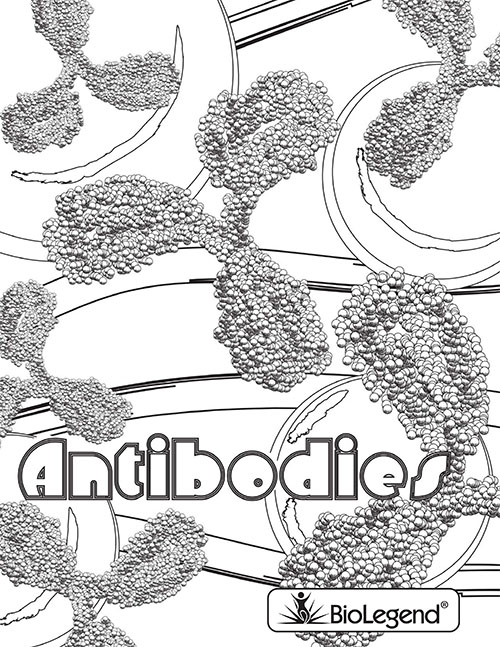
An antibody, also called immunoglobulins (Ig), are proteins typically secreted by plasma cells (which are differentiated B cells) or found on the surface of B cells. Antibodies can target and coat pathogens. The antibody’s target, an antigen, is recognized by the Fab portion in its structure. The recombination of this portion of the antibody generates a huge library of potential targets (an estimated 3 x 1011 possibilities) to protect your body. The Fc portion of an antibody can then be picked up by various cells expressing Fc receptors to initiate an immune response. Antibodies can also opsonize a target, making it more easily recognized by phagocytes. In a research setting, antibodies can be used to detect markers expressed by cells or used as a therapeutic to prevent ligand/receptor interactions.
Learn more with these related webpages:
Astrocytes
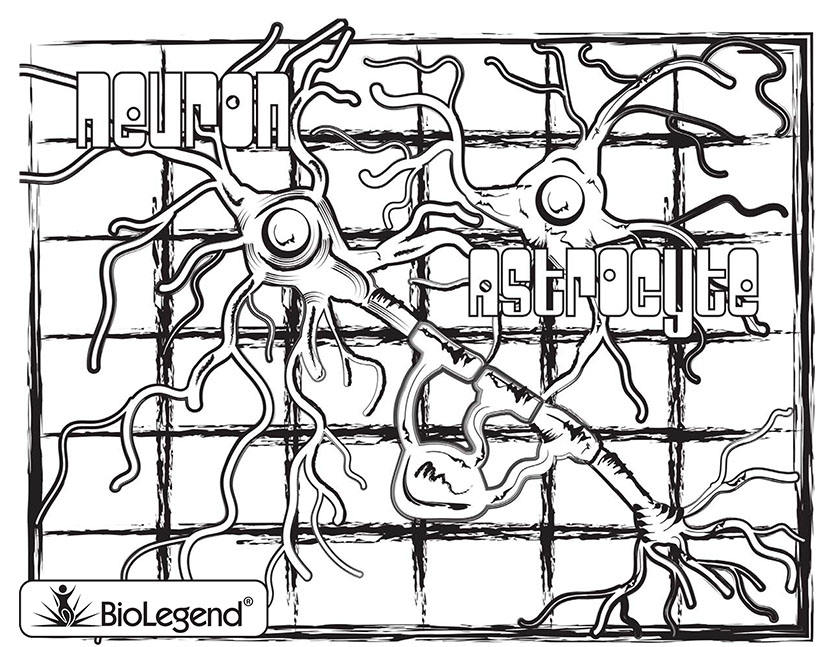
As their name implies, Astrocytes (Greek for star cell) are glial cells that can be found in both the brain and spinal cord. Astrocytes have a variety of functions, serving as the support system for endothelial cells enclosing the blood brain barrier and supplying nutrients to nervous tissue. Astrocytes also maintain the extracellular ion balance and can be instrumental in repair and scarring following serious injuries within the nervous system.
Learn more with these related webpages:
Blog - Microglia: The Immune Cells of the Brain
B Cells

B cells are a lineage of lymphocytes that develop in the bone marrow of most mammals. One of the main functions of a B cell is antibody production, which aids in adaptive immunity, complement activation, and induction of allergic responses.
B cells undergo rigorous checkpoints during development to ensure they possess a functioning B cell receptor and high affinity antibodies. B cells are capable of developing into memory B cells (which generate quicker immune responses on subsequent encounters to an antigen) or plasma cells (which produce lots and lots of antibody). Other B cell subsets include B-1 cells and B regulatory cells.
Bacteria

Bacteria are tiny prokaryotic microbes that come in different shapes and sizes. They've colonized a variety of animals (in symbiotic and parasitic relationships) and diverse habitats, including hot springs, radioactive waste, areas of extreme heat or cold and everywhere in between. In the human body, bacteria typically outnumber human cells ten to one. Some bacteria are beneficial in our digestive tract or on our skin as they limit the niches that can be occupied by pathogenic microbes. Certain strains can be used to break down oil or produce food (like cheese and yogurt). However, some types of bacteria are pathogenic and can cause diseases in their hosts. Antibiotics are often prescribed to combat bacteria, but antibiotic resistance is a growing concern.
Learn more with these related webpages:
Blog - Probiotics: Myths and Mysteries
Blog - Mental Health and Bacteria
Podcast Episode - Bacteria, Aging, and Cocoa Puffs Publications
The Brain
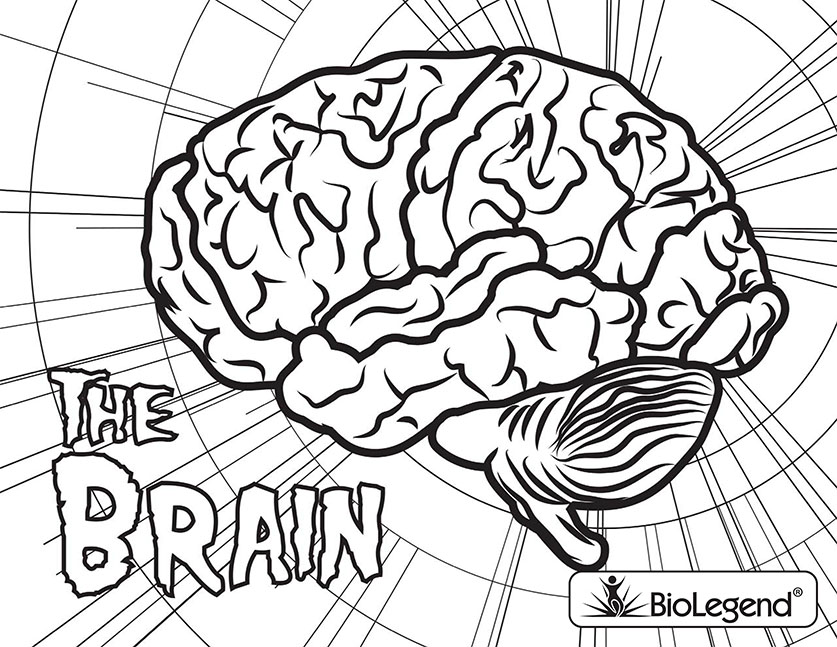
The brain is the focal point of the nervous system (and the only organ to name itself). The cerebral cortex (the largest part of the brain) is estimated to house somewhere between 15 and 30 billion neurons, linked together by synapses. The brain controls all other organs in your body, regulates muscle activity, and controls hormone synthesis. In addition to the physiological side of the brain, an abundance of psychological aspects originate in there as well. After all, could your imagination, dreams, loves, and hopes exist without your brain?
Learn more with these related webpages:
Blog - Immune Privilege in the Brain
Blog - Microglia: The Immune Cells of the Brain
Blog - Changes in the Aging Brain
Blog - Immune Privilege in the Brain, part II: The CNS Lymphatic System
Cell Biology

Cell biology is the study of cellular structure and function, allowing us to gain an understanding of the subcellular mechanisms of living organisms. Whether your studies focus on immunology, microbiology, cancer, or neuroscience, cell biology-related processes are always at the heart of research. BioLegend's Cell Biology products cover research areas including cell metabolism, genetics, cell structures or subcellular compartments, cellular communication or signaling, and the cell cycle. We offer a variety of cell biology reagents for western blotting, immunofluorescence microscopy, flow cytometry, protein purification, cell tracking, and more.
Dendritic Cells
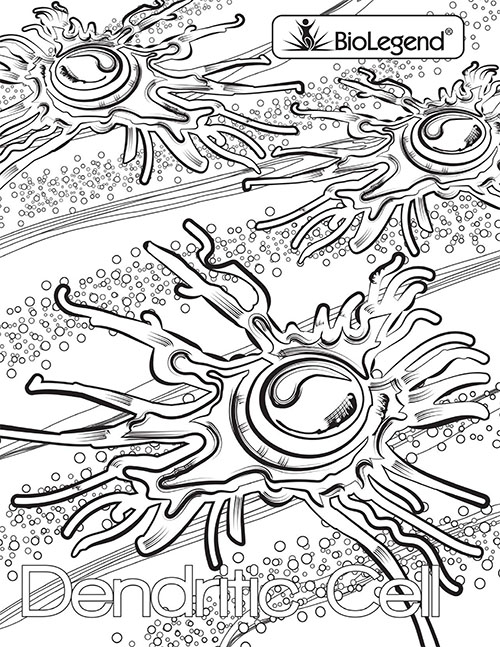
Dendritic cells are antigen presenting cells that play a key role in innate immunity. They are also prolific phagocytes, specializing in the uptake of molecules and pathogen-related material. These antigens are broken down and presented to T cells to promote stimulation. Dendritic cells have been classified as conventional (classical/myeloid) or plasmacytoid DCs (pDCs). Each has its own subclasses, but conventional dendritic cells are best known for their antigen presentation and T cell stimulation abilities, while plasmacytoid dendritic cells produce large, potent amounts of Type I Interferon, which aids in anti-viral responses.
DNA

Deoxyribonucleic acid is a molecule that carries the genetic blueprint for all basic life processes in living organisms (and even some types of viruses). Most DNA molecules are composed of two strands that wind around each other to form a double helix. The two DNA strands are made of nucleotides, which can be composed of cytosine, guanine, adenine, or thymine. Deoxyribose and a phosphate backbone complete the strand. Nucleotides between the strands are joined together (adenine to thymine, guanine to cytosine). DNA was first isolated by Friedrich Miescher in 1869. Watson and Crick built a DNA model in 1953 (along with help from Rosalind Franklin's X-ray diffraction data). Your DNA essentially makes you who you are!
Learn more with these related webpages:
Blog - Women in Science: Rosalind Franklin and the Double Helix
Eosinophils
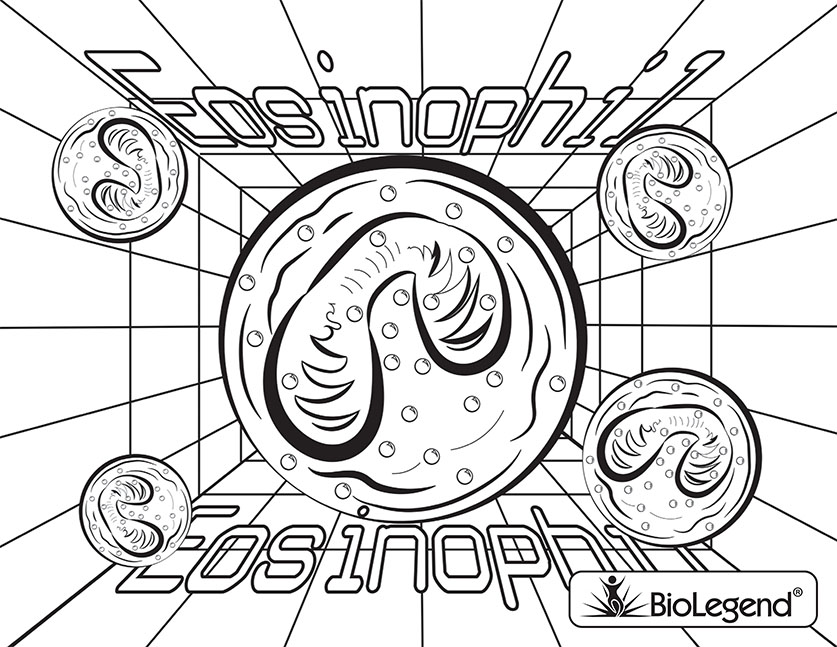
Named for their affinity for acidic dyes (eosin in particular), eosinophils are a subset of granulocytes that contribute to immunity against parasites and viruses. Eosinophils may also contribute to allergy and asthma. Like other granulocytes, they can release reactive oxygen species, lipid mediators, cytokines, and other growth factors during the process of degranulation. They are activated in response to Th2-related cytokines like IL-3 and IL-5.
Learn more with these related webpages:
Epidermal Layers

The epidermis is one of your first lines of innate immunity defense as it serves as a physical barrier that keeps potential pathogens out. The epidermis also serves as a chemical barrier due to the presence of enzymes, antimicrobial peptides, lipids, and acids. In addition to epithelial cells, keratinocytes and Langerhans cells will also reside within the epidermis. Keratinocytes account for 90% of cells in the epidermis, serving as a barrier and producer of proinflammatory mediators. Langerhans cells are a type of dendritic cell found in the skin and mucosa. They survey these areas, seeking out pathogens to present to T cells.
HIV

The human immunodeficiency virus (HIV) is a lentivirus that infects human immune cells, leading to acquired immunodeficiency syndrome or AIDS. HIV can be passed on through bodily fluids and typically targets CD4+ T helper cells, dendritic cells, and macrophages as a point of entry (utilizing CD4 and chemokine receptors). CD4+ T cells numbers in patients often precipitously drop due to apoptosis, pyroptosis, or lysis by CD8+ T cells. Subsequently, opportunistic infections can become a problem once the host is immunocompromised. Despite being clinically observed in the United States in the early 1980s, a cure has been elusive as HIV is prone to rapid mutations. In addition, creating a vaccine that successfully defends against multiple (or all) subtypes of HIV has been very challenging.
Learn more with these related webpages:
Bio-Bit - The Role of T Follicular Helper Cells in HIV
Blog - Microbial Mechanisms to Escape the Immune System 3
Podcast Episode - AIDS, Teaching Science, and Breakthrough of the Year 2013
Macrophages
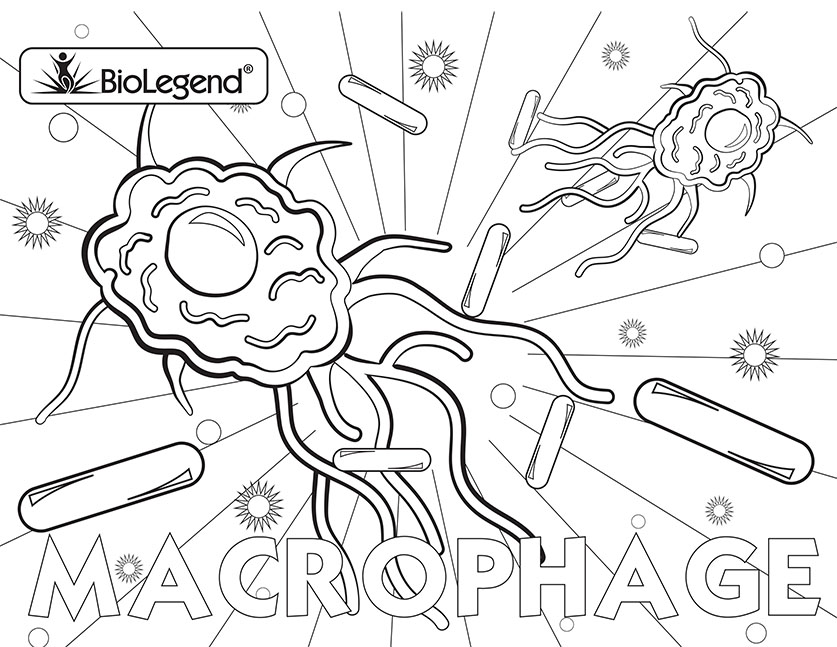
Monocytes are a population of circulating white blood cells with the potential to differentiate into macrophages and dendritic cells in tissue. Monocytes develop in the bone marrow and can be subdivided based on size, trafficking and innate immune receptor expression. They are key in anti-microbial responses, but are also known to be involved with some inflammatory diseases. If drawn into tissues by inflammatory signals or chemokines, they can develop into macrophages.
Macrophages specialize in phagocytosis and can also help with pathogen killing and wound repair. Their function and phenotype can depend on their tissue environment. M1, or classical, macrophages promote Th1 responses and inflammation, while M2, or, alternative macrophages, support immunosuppression and wound healing/tissue repair.
Mitosis
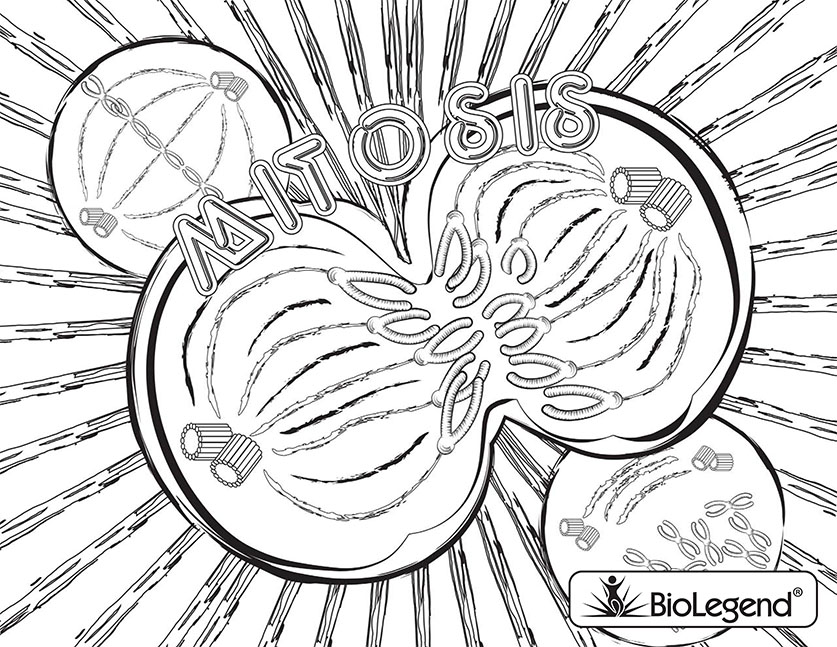
Mitosis describes the steps in the cell cycle where chromosomes are duplicated and subsequently split among the two identical daughter cells formed during cell division. Mitosis is divided up into several stages: prophase, prometaphase, metaphase, anaphase, and telophase. This is a critical procedure as errors can spark apoptosis in the cell. Errors in mitosis can lead to devastating mutations, giving rise to cancerous cells.
Neurons

A neuron, or a nerve cell, is one of the two main components of the central nervous system (glial cells being the other). Unlike other cells in the body, a neuron is a specialized cell capable of conducting electrical and chemical signals in a process known as neurotransmission. There are as many as 10,000 different types of neurons in the human brain, most of which convey motor or sensory information.
Neurons pass signals to one another and other cell types through synapses. Synaptic signals from other neurons can be received either by the soma, dendrite or axon, whereas signals to other neurons are transmitted only by the axon. The nervous system is wired by numerous neurons interconnected by synapses in a complicated neuronal circuit. It is estimated that the human brain alone contains around one hundred billion neurons and one hundred trillion synapses!
Neutrophils
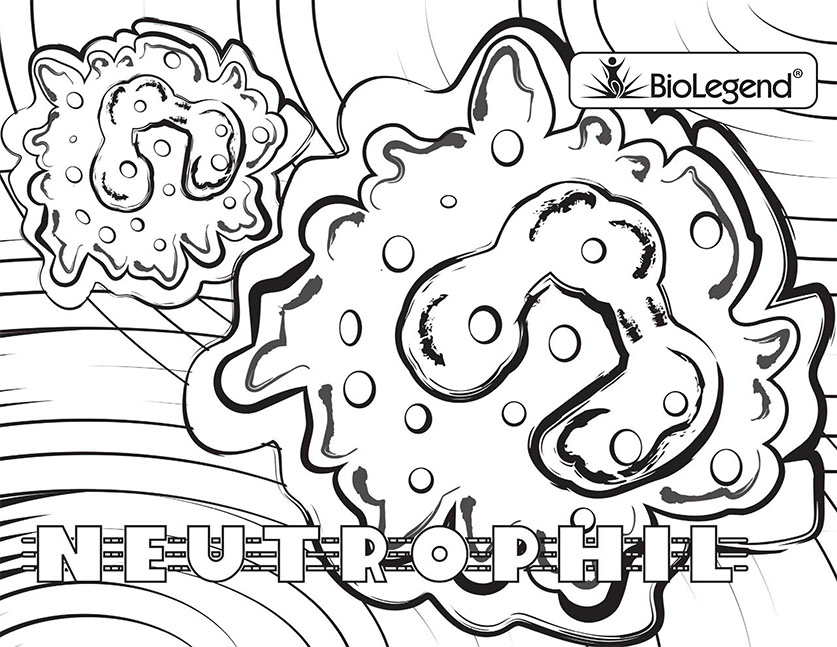
In an hematoxylin and eosin stain, eosinophils will stain bright red, and basophils will stain dark blue. However, a third type of granulocyte will stain a neutral pink, hence its name: neutrophil. Neutrophils are the most common cell type found in the blood, constituting a major part of the innate immune system. They are typically short-lived (5-6 days in humans) and serve as first responders to sites of inflammation. Neutrophils can attack pathogens by releasing anti-microbial agents (similar to other granulocytes), phagocytosis, and the generation of the neutrophil extracellular trap (NET; a web-like structure of DNA that ensnares microbes).
Learn more with these related webpages:
Red Blood Cells
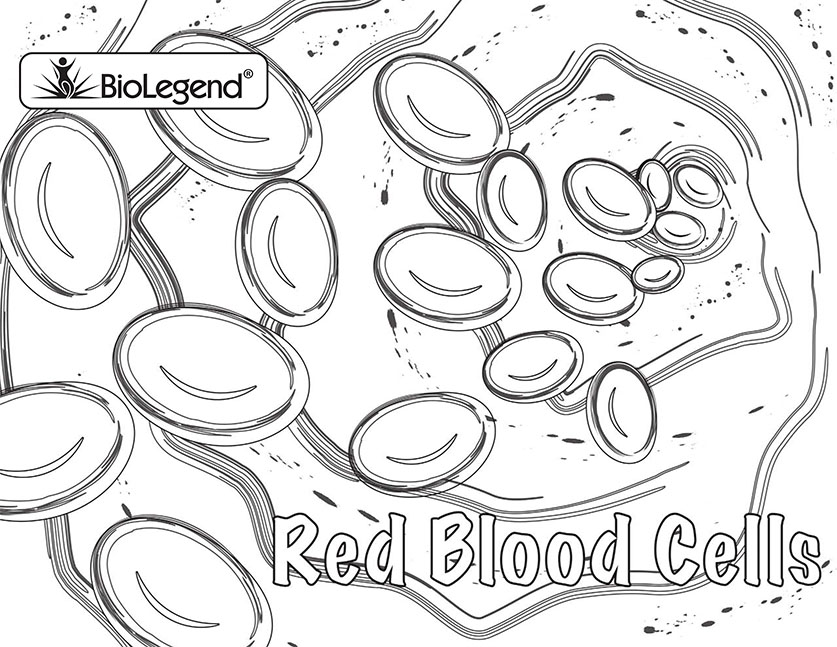
Red blood cells (RBCs), also called erythrocytes, are the most abundant cell type found in the blood (unsurprisingly) and they deliver oxygen to your body's tissues. Internally, RBCs are flush with hemoglobin, a molecule that contains iron and is responsible for oxygen binding. It also provides the characteristic red hue associated with these cells.
Stem Cells

Stem cells have the unique ability to develop into many different cell types in the body. In addition, they can help maintain homeostasis, replacing lost or dying cells. When a stem cell divides, each daughter cell has the potential either to remain a stem cell or differentiate into a specialized cell. Stem cells are characterized by two abilities. First, they are capable of dividing multiple times without differentiating (self-renewal). Second, stem cells can differentiate into specialized cell types (potency).
Embryonic stem cells are obtained from the inner cell mass of a blastocyst and are nearly limitless in proliferative potential both in vivo and in vitro. They can also differentiate into nearly any cell type in the body. Adult/somatic stem cells have limited proliferative ability in vitro, making it difficult to obtain high numbers to work with. Through genetic programming, scientists have generated induced pluripotent stem cells. Once thought to be terminally differentiated, these cells can once again gain stem cell-like characteristics.
Stromal Cells
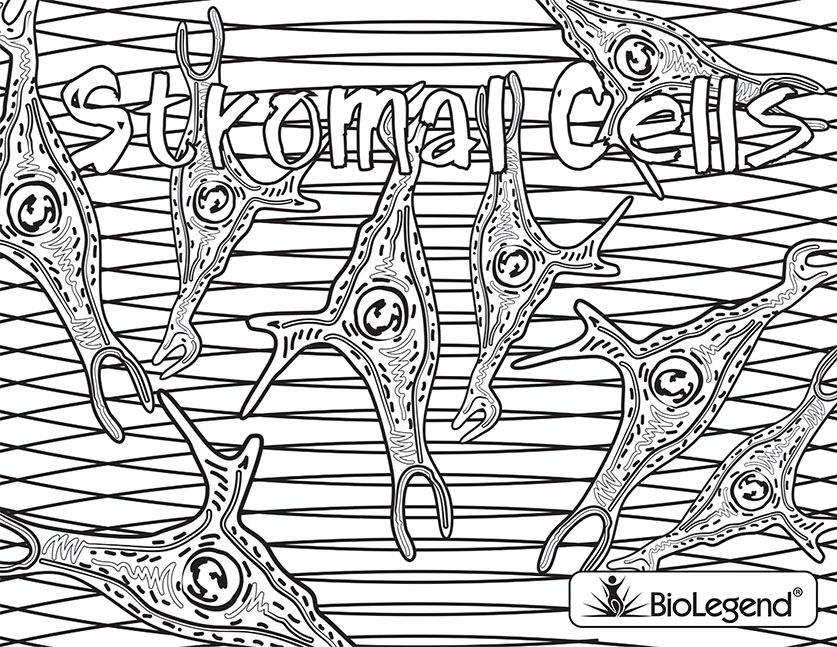
Stromal cells are classically defined as cells than make up the connective tissue of an organ, with their historical role to simply provide the architecture for the support of other functional cells within these organized tissues. However, rapidly emerging evidence suggests that stromal cells are far more deeply involved in the functional regulation of many tissues, organs, and in particular - immune responses.
Non-hematopoietic stromal cells, including fibroblasts, myofibroblasts, endothelial cells, pericytes, smooth muscle cells and mesenchymal stromal cells are now beginning to be appreciated as key cells required for the development and function of the immune system. In addition they are central to the persistence of many cancers and starting to be considered as functional cells in various immune-mediated diseases. They have been shown to present antigen, respond to pathogens, allow immune tolerance, educate functional responses of other immune cells, and to control wound healing. Indeed there are few immunological processes that stromal cells are not deeply involved in!
Synapses
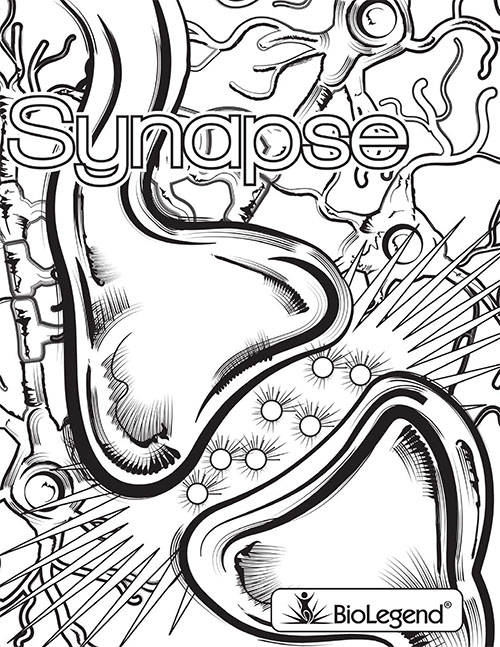
The neuron is a critical functional unit of the nervous system, which relays electrical and chemical signals to other neurons at junctions known as the neural synapse. The differentiated mammalian central nervous system is estimated to contain at least 100 billion neurons, which communicate with each other through numerous synaptic connections. The neural synapse most often occurs between the axon of one neuron and the dendrites of another and is composed of hundreds of proteins that function together to coordinate the exquisitely tuned signals that are the physical basis for higher nervous system functions, such as cognition, memory, and movement. BioLegend provides an extensive selection of antibodies and reagents for the analysis of synaptic function.
Learn more with these related webpages:
Viruses
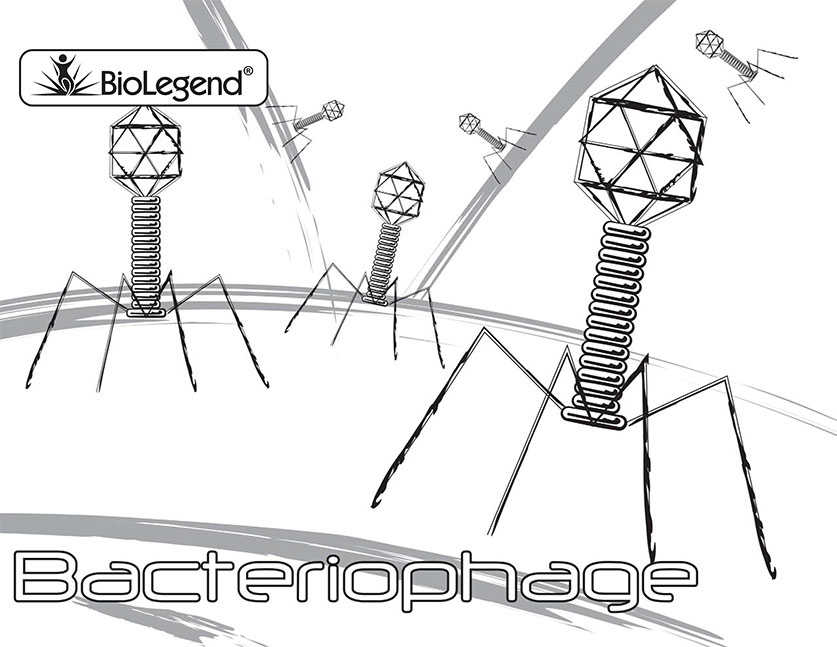
A virus is a small infectious microbe only capable of reproducing within a host cell. Viruses were initially described in an 1892 article by Dmitri Ivanovsky. In the article, he mentioned a non-bacterial pathogen infecting tobacco plants. Six years later, the tobacco mosaic virus would be identified by Martinus Beijerinck. Similar to bacteria, viruses have been found in nearly every type of habitat. Viruses, when not in a host cell, consist of DNA or RNA, a protein coat or capsid, and in some cases, a lipid envelope. The average virus is only 1/100th the size of the average bacterium! Despite this size difference, there is a special class of viruses that prey on bacteria: bacteriophages. Some research is focused on using phages as an alternative to antibiotics due to the fact that drug-resistant bacteria are becoming a bigger problem in the medical arena. There is still debate as to whether viruses are classified as living beings since they require a host in order to reproduce.
Learn more with these related webpages:
Blog - Gene therapy using ancient viruses
Blog - Microbial Mechanisms to Escape the Immune System 3
Blog - Reviving ancient viruses
Podcast Episode - Venom and Ancient Viruses
 Login / Register
Login / Register 






Follow Us